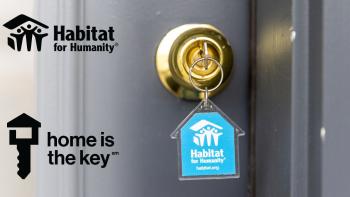
Energy-saving tips for your home
Home is the Key sponsor Nest partners with Habitat for Humanity based on two shared beliefs: that energy efficiency is a critical component of building sustainable homes and communities and that innovative energy-efficient technology can help bring energy savings to those who need it most.
Saving energy can help families save money for other important household needs — while helping the planet, too. Use these smart tips to improve energy efficiency in your home.
- According to the U.S. Department of Energy, many of your appliances consume up to 75 percent of their energy when they’re turned off. It’s called “vampire voltage.” Consider unplugging or use smart power strips and smart plugs to remotely turn off devices connected to a virtual assistant. You can even set up routines that only turn on your devices when you want to use them.
- Swap out your incandescent bulbs for smart ENERGY STAR Certified LED bulbs. According to ENERGY STAR, just switching out five bulbs could save as much as $75 per year. LEDs also last up to 15 times longer, with a total life or around 50,000 hours. Consider smart bulbs that make it easy to turn off or dim the lights with your voice or an app.
- Weatherize your home:
- Windows can get drafty, particularly older ones. Plug leaks with caulking, weather stripping or with a shrink film storm window kit. Tight-fitting drapes or shades can also help.
- Doors are another way cold air sneaks into the house. To stop this, install a draft seal onto the bottom of the door and make sure to always lock the door firmly to form a seal against weather stripping.
- You can find holes that let cold air in near plumbing, chimneys, basements, crawl spaces and recessed lighting. Close up these areas with sealing foam.
- Explore utility rebates on smart thermostats that use machine learning and artificial intelligence to help you save energy.

